Solar Power: The Future of Renewable Energy
Solar power is increasingly recognized as a pivotal force in the renewable energy sector. Its technological advancements promise improved efficiency and reduced costs. Governments worldwide are implementing policies that favor solar adoption. This shift not only addresses environmental concerns but also has significant economic implications. As solar energy becomes more integrated into daily life, the question arises: what will the future landscape of energy independence look like?
The Evolution of Solar Technology
As solar technology has advanced, it has transformed from rudimentary photovoltaic cells to sophisticated solar panels that power homes and industries worldwide. Early solar cells, developed in the 19th century, had limited efficiency, primarily converting sunlight to electricity in laboratory settings. The 20th century brought significant advancements, including the introduction of silicon-based solar cells, which improved efficiency and accessibility. By the 1970s, solar energy began to gain traction as a viable alternative to fossil fuels. In recent years, innovations in materials, such as thin-film technologies and bifacial panels, have further enhanced energy capture and reduced costs. This evolution reflects a growing commitment to harnessing renewable energy, contributing to sustainability and reducing reliance on traditional energy sources. Investments in renewable energy are expected to continue growing, further propelling the development of solar technology.
How Solar Panels Work
Understanding how solar panels work begins with the functionality of photovoltaic cells. These cells convert sunlight into electricity through an energy conversion process that involves the movement of electrons. This fundamental mechanism is essential for harnessing solar power effectively. Additionally, the integration of AI technology in renewable energy systems can optimize the efficiency of solar energy production.
Photovoltaic Cell Functionality
Although solar panels are often seen as simple devices, their functionality relies on complex interactions between light and materials. At the core of these panels are photovoltaic (PV) cells, typically made from silicon, which absorb sunlight. When photons from sunlight strike the silicon atoms, they transfer their energy, knocking electrons loose from their atomic bonds. This movement of electrons creates an electric current. The design of PV cells includes a p-n junction, formed by layering p-type and n-type silicon, which establishes an electric field. This field directs the flow of freed electrons, enhancing the efficiency of energy capture. Consequently, solar panels convert sunlight into usable electricity through carefully engineered materials and structures, highlighting their intricate nature.
Energy Conversion Process
The energy conversion process in solar panels involves a series of well-orchestrated steps that transform sunlight into electrical energy. Initially, sunlight strikes the photovoltaic (PV) cells, exciting electrons within the semiconductor material, typically silicon. This excitation creates free electrons and “holes,” allowing for the flow of electric current. The arrangement of these cells in a panel facilitates direct current (DC) generation. An inverter then converts this DC into alternating current (AC), which is compatible with the electrical grid and home appliances. Additionally, solar panels often integrate monitoring systems to enhance efficiency and performance. This intricate process showcases the technology harnessing renewable energy, contributing considerably to sustainable power solutions.
Types of Solar Energy Systems
Solar energy systems can be categorized into several distinct types, each designed to harness sunlight in different ways. The most common type is photovoltaic (PV) systems, which convert sunlight directly into electricity using solar panels composed of silicon cells. Concentrated solar power (CSP) systems utilize mirrors or lenses to focus sunlight onto a small area, generating heat that drives a turbine for electricity production. Additionally, solar thermal systems capture sunlight to produce heat, often used for heating water or buildings. Off-grid solar systems operate independently of the electrical grid, providing power in remote locations, while grid-tied systems are connected to the utility grid, allowing for energy exchange. Each type offers unique advantages, catering to varying energy needs and applications, and contributes to sustainable practices that are essential for a healthier planet.
Environmental Benefits of Solar Power
As societies increasingly seek sustainable energy solutions, the environmental benefits of solar power become more evident. Solar energy considerably reduces greenhouse gas emissions, contributing to the mitigation of climate change. Unlike fossil fuels, solar power generation produces no air pollutants, leading to improved air quality and public health. Additionally, solar panels require minimal water for operation, conserving essential water resources compared to conventional power plants. The widespread adoption of solar energy can also decrease dependence on finite resources, promoting ecological balance. By utilizing land that may otherwise be unproductive, solar installations can coexist with agricultural practices, further enhancing land use efficiency. Overall, solar power offers a clean, sustainable alternative that supports environmental preservation while meeting energy demands. Practicing mindfulness techniques can enhance our appreciation of these environmental benefits, encouraging a deeper connection to the world around us.
Economic Advantages of Solar Energy
The economic advantages of solar energy extend beyond environmental benefits, presenting significant opportunities for job creation in the renewable energy sector. As the demand for solar installations grows, so does the potential for long-term cost savings for both consumers and businesses. This shift not only enhances energy independence but also fosters a sustainable economic landscape. Moreover, the increasing reliance on advanced collaboration tools in remote work settings can support the growth of solar businesses by facilitating efficient communication and project management.
Job Creation Opportunities
How can the shift towards renewable energy sources, particularly solar power, greatly impact job creation? The change to solar energy presents a significant opportunity for employment growth across various sectors. The solar industry encompasses manufacturing, installation, maintenance, and research, creating diverse job roles. Manufacturing solar panels necessitates a skilled workforce, while installation requires technicians and engineers, enhancing local economies. Additionally, the expansion of solar farms leads to additional opportunities in project management and environmental analysis. As governments and organizations invest in solar infrastructure, ancillary jobs in logistics, sales, and customer service also emerge, fostering a broader economic impact. Overall, the solar energy sector not only contributes to environmental sustainability but also plays a vital role in job creation and economic resilience.
Long-Term Cost Savings
Shifting to solar energy offers substantial long-term cost savings, making it an economically advantageous choice for both individuals and businesses. Initially, the upfront investment in solar panels may be significant, but the reduction in electricity bills can lead to remarkable savings over time. Moreover, many regions provide incentives, tax credits, and rebates that enhance the financial appeal of solar installations. As energy prices continue to rise, solar energy becomes increasingly cost-effective, allowing users to lock in low energy rates for decades. Additionally, solar systems often require minimal maintenance, further reducing long-term expenses. Ultimately, the combination of decreasing equipment costs and increasing energy independence positions solar energy as a financially sound investment for the future.
Government Policies and Incentives
What role do government policies and incentives play in the growth of solar power? These policies are vital in fostering a favorable environment for solar energy adoption. Governments worldwide offer tax credits, rebates, and grants to reduce the financial burden on consumers and businesses investing in solar technology. Additionally, renewable portfolio standards and feed-in tariffs guarantee that solar energy is prioritized within energy markets. Such incentives not only stimulate investment but also drive innovation in solar technology, making it more efficient and accessible. Moreover, regulatory frameworks can streamline permitting processes, minimizing bureaucratic delays. Overall, supportive government actions are essential in accelerating the shift to solar energy, making it a viable and attractive option for both individual and commercial energy needs.
The Role of Solar Power in Energy Independence
Government policies and incentives not only support solar energy adoption but also play a significant role in enhancing energy independence. By encouraging investment in solar technologies, governments reduce reliance on imported fossil fuels and mitigate vulnerability to global energy market fluctuations. Solar power installations empower individuals and communities to generate their own electricity, fostering a decentralized energy model that enhances local resilience. As more households and businesses shift to solar energy, the overall demand for traditional energy sources declines, leading to a more sustainable energy landscape. In addition, increased solar capacity can stimulate job creation in local economies, contributing to economic stability. Ultimately, solar power emerges as a key component in achieving energy independence and promoting sustainable growth.
Future Trends in Solar Technology
As advancements in technology continue to unfold, the future of solar energy promises to be transformative. Innovations such as perovskite solar cells are emerging, offering higher efficiency rates and lower production costs compared to traditional silicon cells. Additionally, the integration of artificial intelligence is enhancing energy management, allowing for better predictive maintenance and energy distribution. Bifacial solar panels, which capture sunlight on both sides, are gaining traction due to their increased energy output. Moreover, the development of transparent solar cells holds the potential to turn windows into energy-generating surfaces. As energy storage technologies advance, the ability to store solar energy for later use will greatly enhance grid reliability, making solar power an even more attractive option for consumers and businesses alike.
Frequently Asked Questions
How Long Do Solar Panels Typically Last Before Needing Replacement?
The typical lifespan of solar panels ranges from 25 to 30 years. Most manufacturers provide warranties for this duration, ensuring reliable performance. However, efficiency may gradually decline over time, necessitating eventual replacement for peak energy production.
Can Solar Power Work During Cloudy or Rainy Days?
Solar power can still generate electricity on cloudy or rainy days, albeit at reduced efficiency. Solar panels harness diffused sunlight, ensuring some level of energy production, demonstrating their adaptability to varying weather conditions.
What Maintenance Do Solar Panels Require Over Time?
Maintenance for solar panels typically includes regular cleaning to remove dirt and debris, periodic inspections for damage or wear, and monitoring performance to guarantee peak efficiency, ultimately extending their lifespan and enhancing energy production.
Are There Any Health Risks Associated With Solar Panel Installation?
Concerns about health risks associated with solar panel installation mainly involve potential exposure to hazardous materials during manufacturing. However, proper installation practices and adherence to safety regulations greatly mitigate these risks, ensuring a safe environment for installers.
How Can Homeowners Finance Solar Energy Systems?
Homeowners can finance solar energy systems through various methods, including solar loans, leases, power purchase agreements, and government incentives. Each option allows them to manage upfront costs and potentially save on long-term energy expenses.
Conclusion
In summary, solar power represents a transformative force in the quest for sustainable energy solutions. As technology continues to evolve and efficiency improves, the adoption of solar energy systems becomes increasingly viable. With strong governmental support and a growing recognition of its environmental and economic benefits, solar power is poised to play a vital role in achieving energy independence. The future of renewable energy is bright, with solar power leading the charge toward a cleaner, more sustainable world.



